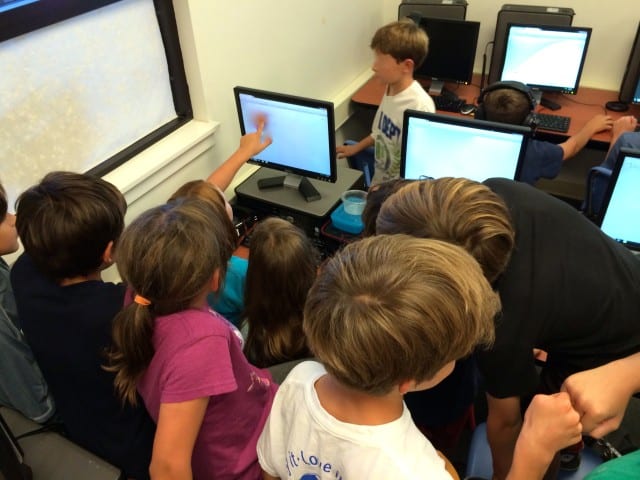Does your child read fluently? Can they distinguish between a paragraph, title, and author in a document or story? Can they type without tears? If you’ve answered yes to all of these questions, your son or daughter is ready to code. Here are some tips to get your child coding.
Hour of Code week is coming up on December 8th – December 12th and if your child or school is interested in coding then Treehouse Club is a great solution. It’s a fast-paced, project-based learning experience for kids ages 9 – 14. And more than that, it’s fun! Which we all know is the secret to teaching kids, right?
Parents, school teachers, home schoolers, after schools, and tutors, here’s a quick how-to guide if you want to introduce coding.
What does coding mean?
Good question! Coding is a series of instructions that communicate with a computer or hardware. It’s like writing a letter, but instead of being inside a Word document on your computer or on a piece of paper it is done on with a text editor. A text editor is just what is sounds like, a piece of software that formats text (or code). This code is then interpreted by a web browser, like Safari or Chrome, and the results are shown on the web. Just like the page you’re looking at now.
Who needs to code and what grade are students ready to write code?
Coding is not for everyone. Some kids will find coding exciting and want to use it for every activity and some will be turned off by even the thought of it. I’ve found that kids enjoy playing with game-like coding programs at every age, but the ideal age to begin writing lines of code is late 4th, or the beginning of 5th grade. At this point children are comfortable with the structure of writing and can identify a title and paragraph in a word document.
Around age 9 or 10, children are gaining a firm grasp of abstract thinking, and will be able to jump into writing an HTML document. Children at this age are also very receptive to new information because most of what they are taught is brand new, coding is just one more thing to learn.
Do I need to learn how to code?
As a parent or teacher, no, is the short answer. But ideally you do need to be familiar with the tool you are allowing your child or students to use. Like any web application, iPad game, or project you do at home or in your classroom, you should have at least looked at it before you introduce it to your child or class. Luckily, by watching the 2 to 3 minute intro video in each Treehouse Club course, you’ll have a strong overview of what your learners are going to be experiencing.
What Role do I Play?
Whether you’re a parent or teacher, you know that some children will fly through the introductory activities and some will spend the whole year struggling through it. Coding is not for torturing kids, its aim is to teach technical skills they may need in the future. And remember that you or your child won’t get assessed on your performance; so encourage them to make whatever they want!
There are no hard and fast rules for what they make or how long it takes them to make it. Enjoy the learning process and relax in knowing that coding is a self-contained, life-long activity that will add value to any young person’s education.
As their guide, I recommend you are honest about your abilities. This will ensure you’re not getting a lot of questions that you don’t know the answer to. Act as their guide and introduce them to how to get their answers solved; pro tip: use the Treehouse Forum! There are hundreds of knowledgeable Treehouse students there and questions are normally answered within minutes of posting them. If you’re in the classroom, teach your students to ask each other questions first. The ‘three before me’ rule is to require your students to ask three other students to help before they ask you. It really works!
Lastly, the most important part of learning to code is sharing. If you’re in a classroom leave the last 10 – 15 minutes at the end of each class for students to present their work to the whole class. If you don’t have the tools to do that, you could also have your students share among their table groups or do a whole class gallery walk.
If you’re at home, or with your home school student, ask them consistently how they did something. They’ll be happy to tell you and by teaching you they will feel empowered by their knowledge. In addition, by talking about what they’re learning it will reinforce their new skill. No matter how you do it, sharing will keep them accountable, expose you or your students to new ideas, and reinforce the learning process.
How do I start?
Step 1. Sign up yourself, child, class, or child’s class for Treehouse.
Step 2. Check out the library for Treehouse Club courses on HTML, CSS, and JavaScript. (Listed from easiest to hardest.)
Step 3. Get coding!
Step 4. Use the profile for individual students or the teacher dashboard for classes to monitor learning. You’ll be able to see progress, successes, interests, and challenge areas.
Teachers: please feel free to download this lesson plan and know when you’re ready there are several more where that came from!
FREE Lesson Plan – Publish a Story with HTML
